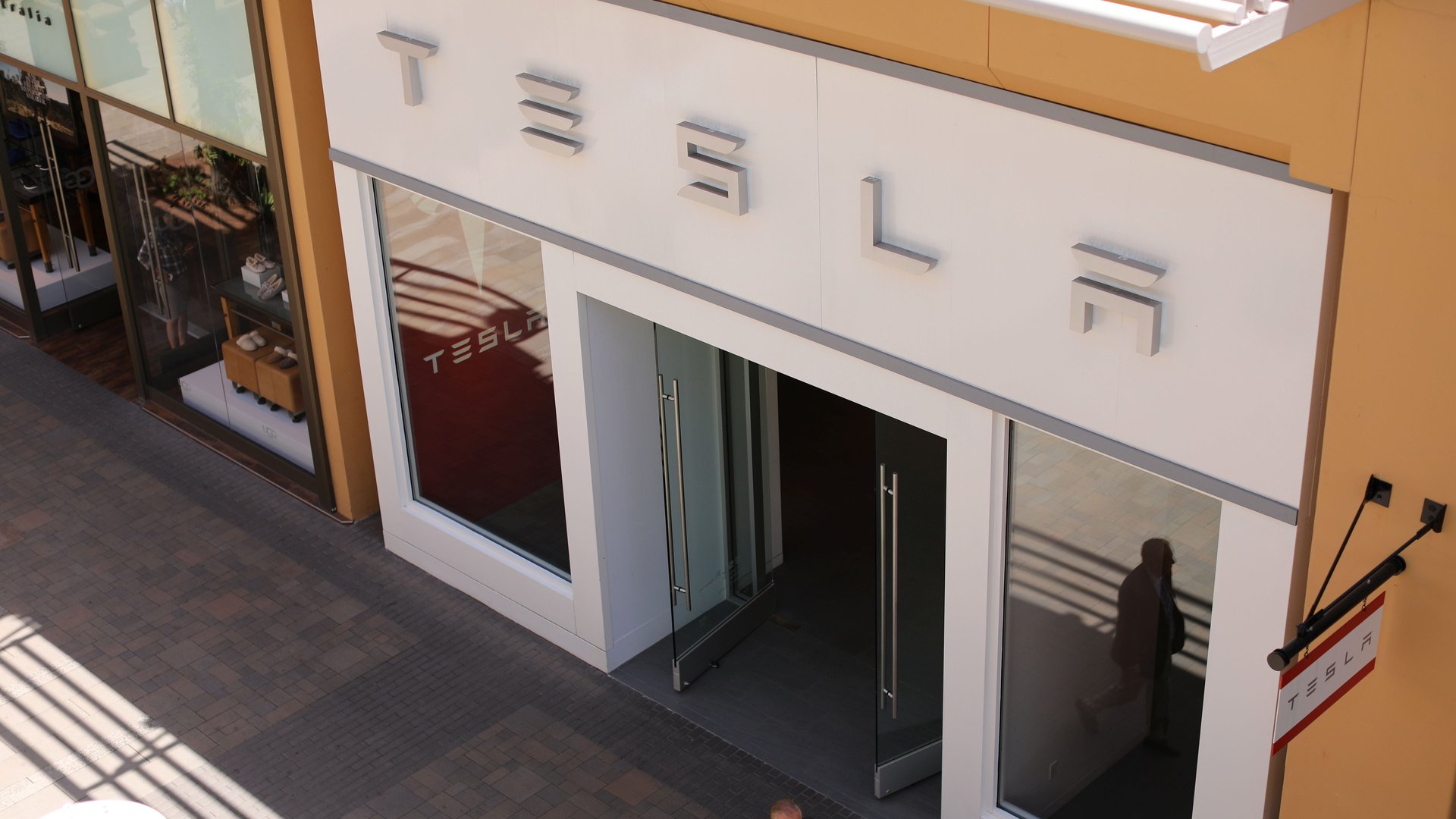Tesla just revealed how important physical stores are to its brand
Tesla will broadly raise vehicle prices by 3% on March 18 in an effort to keep more retail stores open, the company said in a securities filing today (March 11).


Tesla will broadly raise vehicle prices by 3% on March 18 in an effort to keep more retail stores open, the company said in a securities filing today (March 11).
The electric carmaker, run by cult technology personality Elon Musk, has been chasing a much-hyped $35,000 price tag that would make its Model 3 one of the most affordable electric cars on the market. The company said in late February that it had achieved that price for the standard Model 3, which has a range of 220 miles. Another version of the Model 3, which comes with an additional 20 miles of range and slightly faster acceleration, sells for $37,000.
At the same time, Tesla said it planned to close “many” stores in the coming months as it shifted global sales to an online-only model. Tesla framed these store closures as a cost-cutting measure that would let it lower vehicle prices by about 6% on average, helping it reach the $35,000 target for the Model 3 sooner than expected.
The company is now reevaluating those plans, after initially closing 10% of sales locations. In its latest update, Tesla said it would “keep significantly more stores open than previously announced” and reopen a handful of stores in “high visibility locations” that had been closed, albeit with smaller staffs. It said another 30% of locations are under review and may be closed or kept open based on their performance over the next few months.
In exchange for keeping more stores open, Tesla plans to lift prices on most vehicles by 3% beginning March 18, giving prospective Tesla owners a week to place orders at the company’s current prices. The $35,000 Model 3 is notably excluded from the increase.
Keeping more stores open hasn’t changed Tesla’s mind about moving global sales online. So why do it? The answer is apparent in how the company talks about why it bothers with stores at all.
“Our Tesla stores and galleries are highly visible, premium outlets in major metropolitan markets,” the company says in its 2018 annual report. Company-owned stores help Tesla control “costs of inventory, manage warranty service and pricing, maintain and strengthen the Tesla brand, and obtain rapid customer feedback.” Even opening a service center in a new geographic region can increase demand, Tesla writes.
In other words, Tesla’s stores aren’t about selling cars. They’re about selling the brand. The company’s retail footprint is some of its best marketing: a controlled environment where interested customers can arrange a test drive and have a sales rep help them place the online order, distinguishing it from other online shopping experiences.
Tesla believes a physical presence is key to its future. The company said in its annual report that it planned to “generate ongoing growth and demand” by investing in stores, service locations, and vehicle charging stations. It said the plan would require “significant cash investments and management resources.”
Tesla doesn’t break out the portion of lease obligations for retail and service locations, describing it only as a “large number of properties” across North America, Europe, and Asia. From 2017 to 2018, cost of services and other revenue jumped 53%, or $651 million, which the company attributed mainly to increased costs of new service centers and added staffing in new and existing service centers.
As of Dec. 31, 2018, Tesla had 378 stores and service locations worldwide, including 27 opened during the fourth quarter. It had 1,421 “supercharger” stations globally, after adding 69 during the fourth quarter.